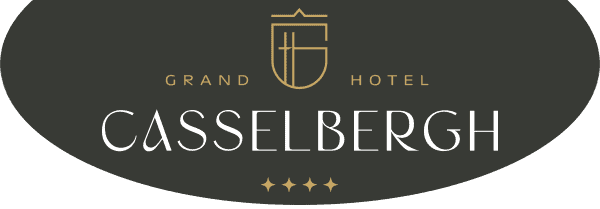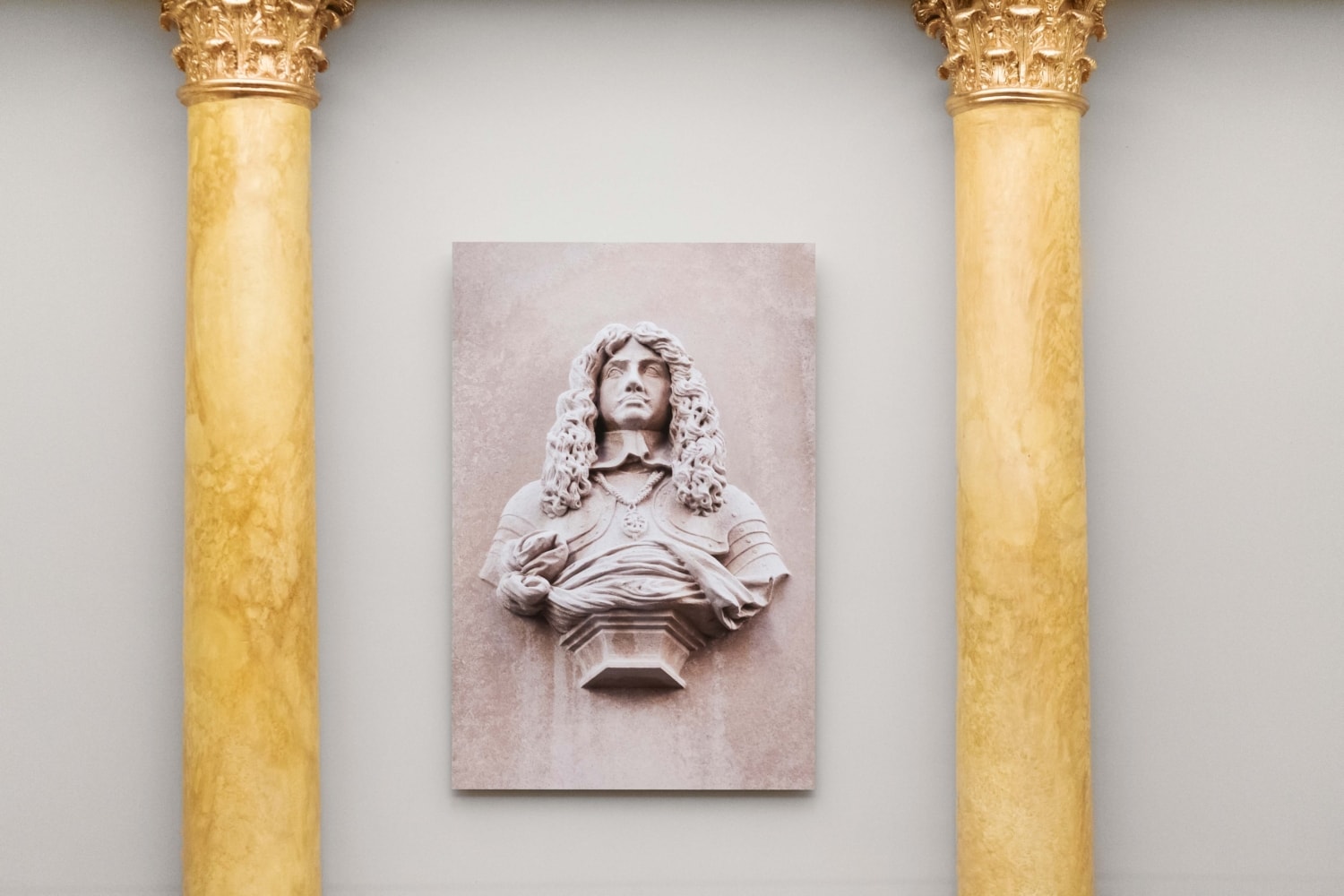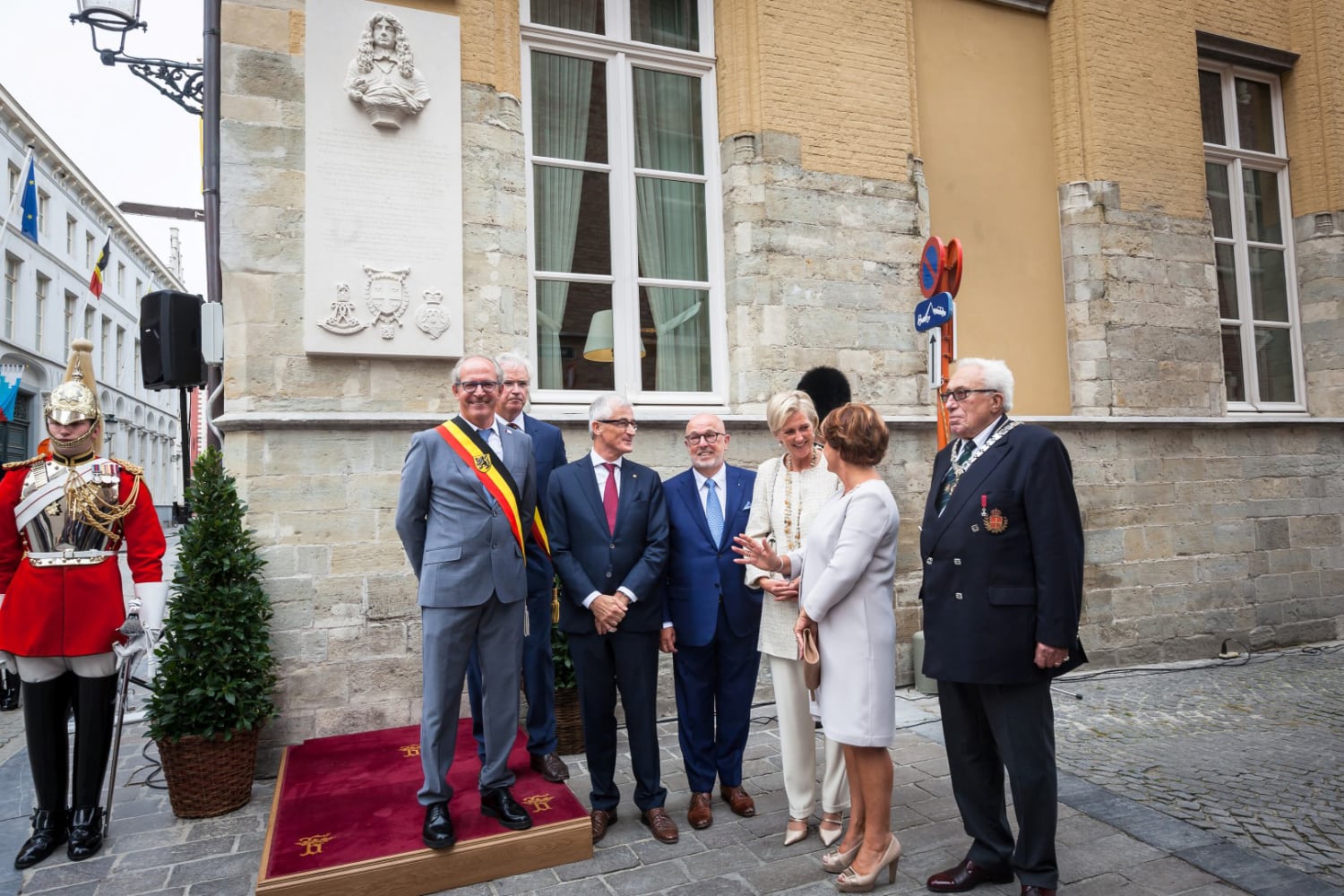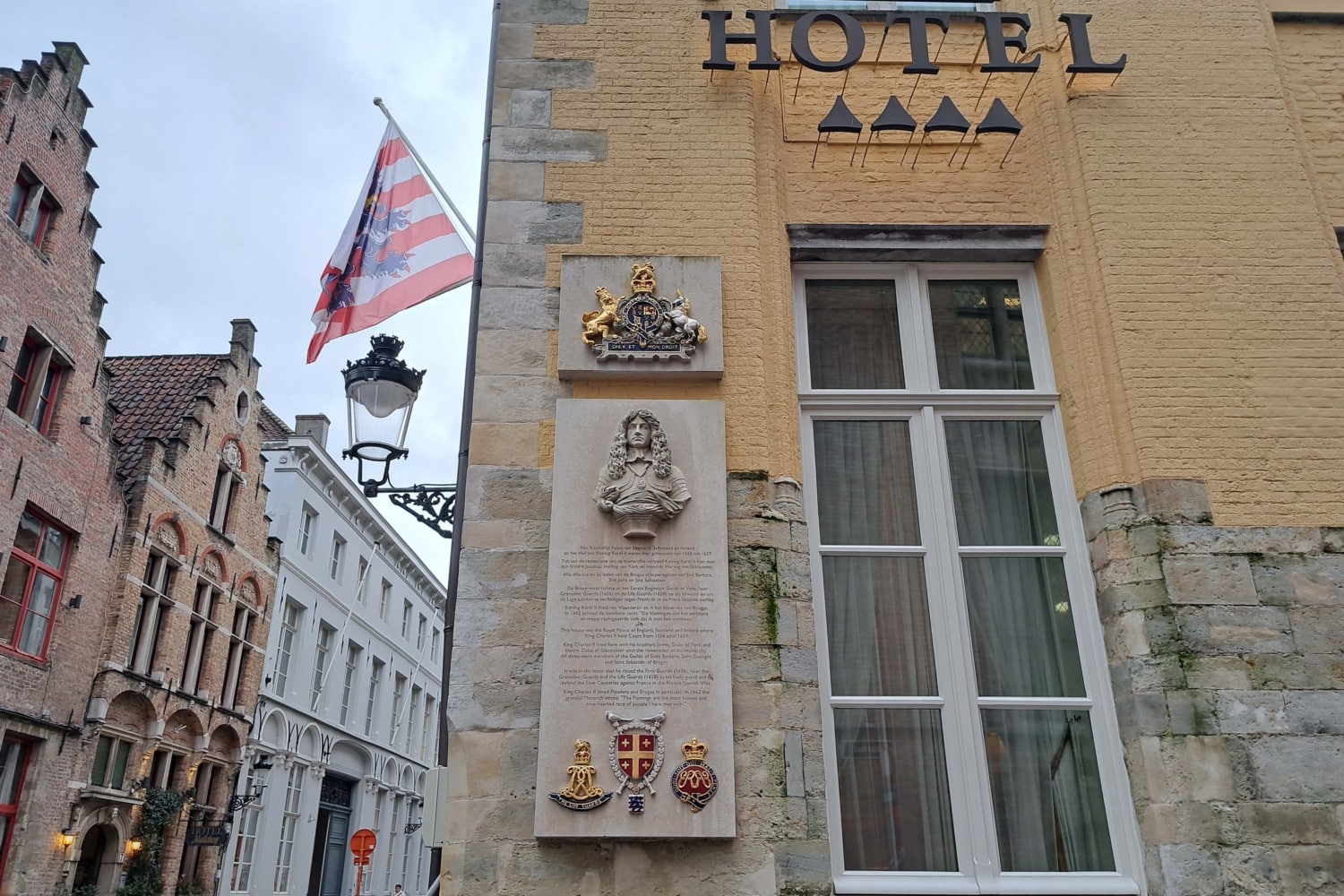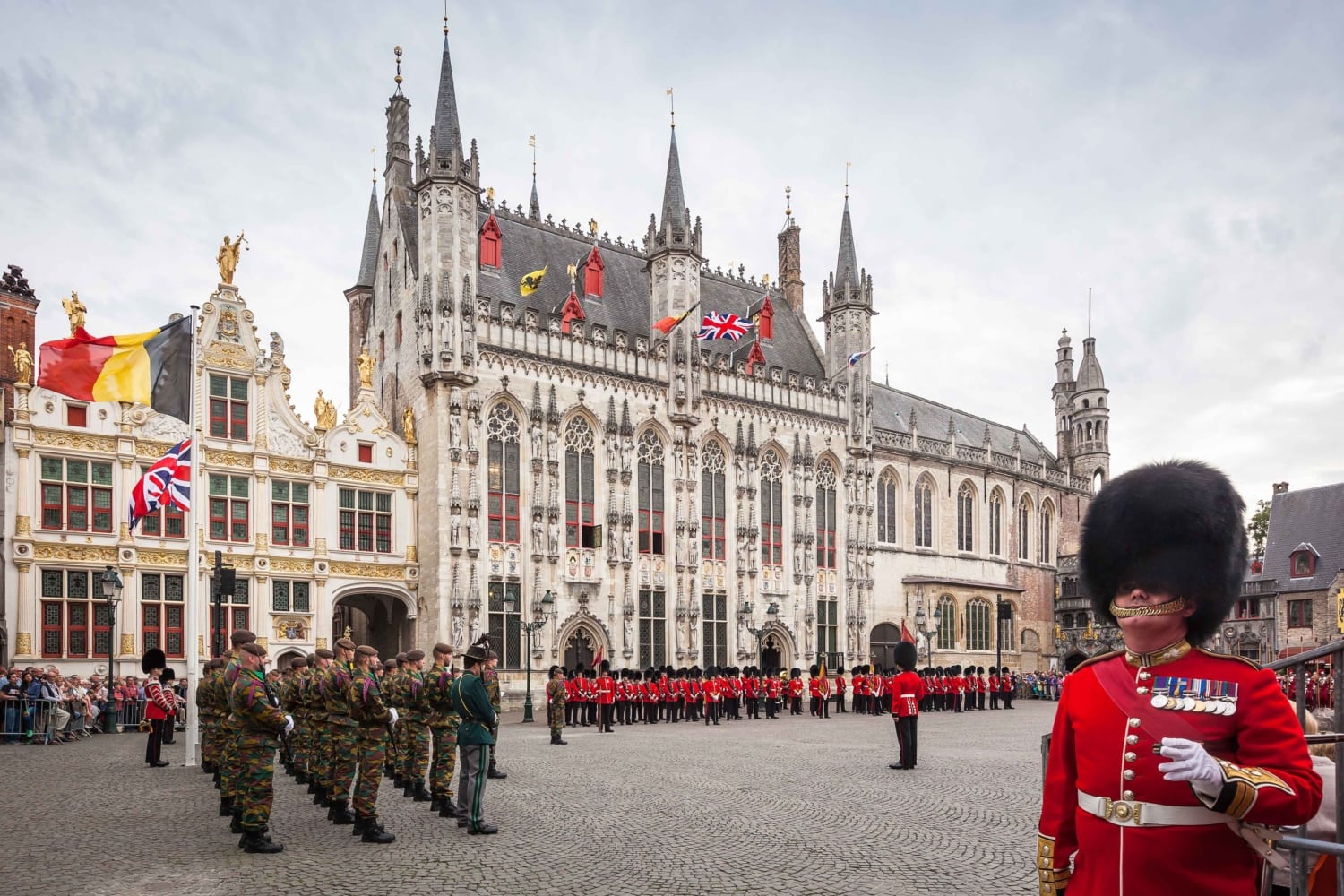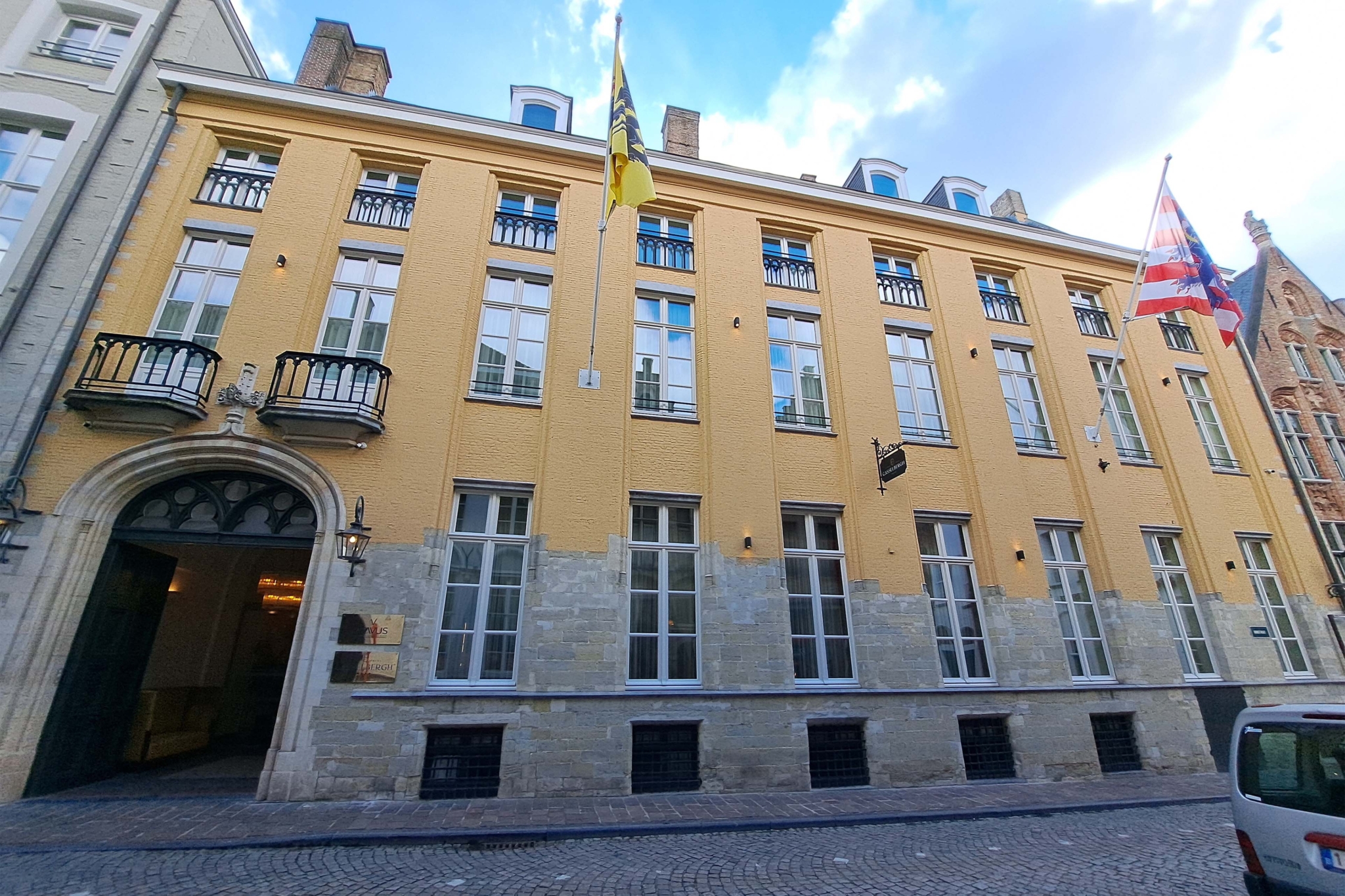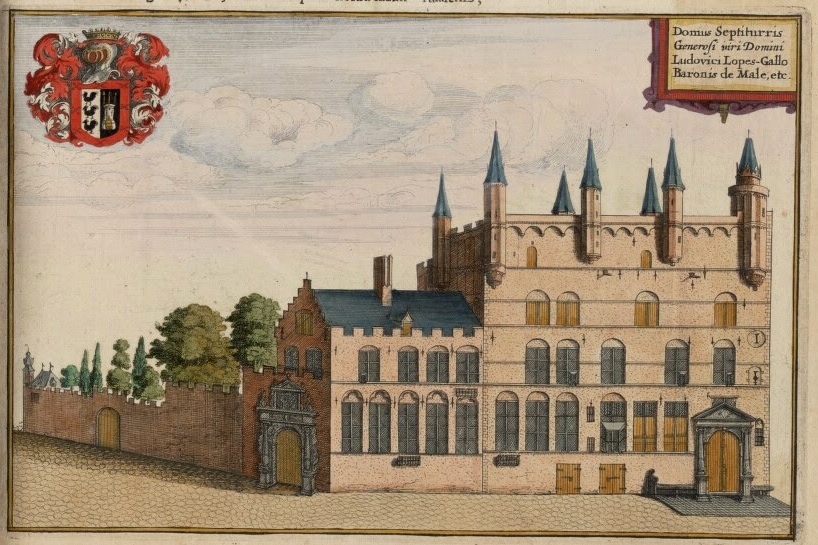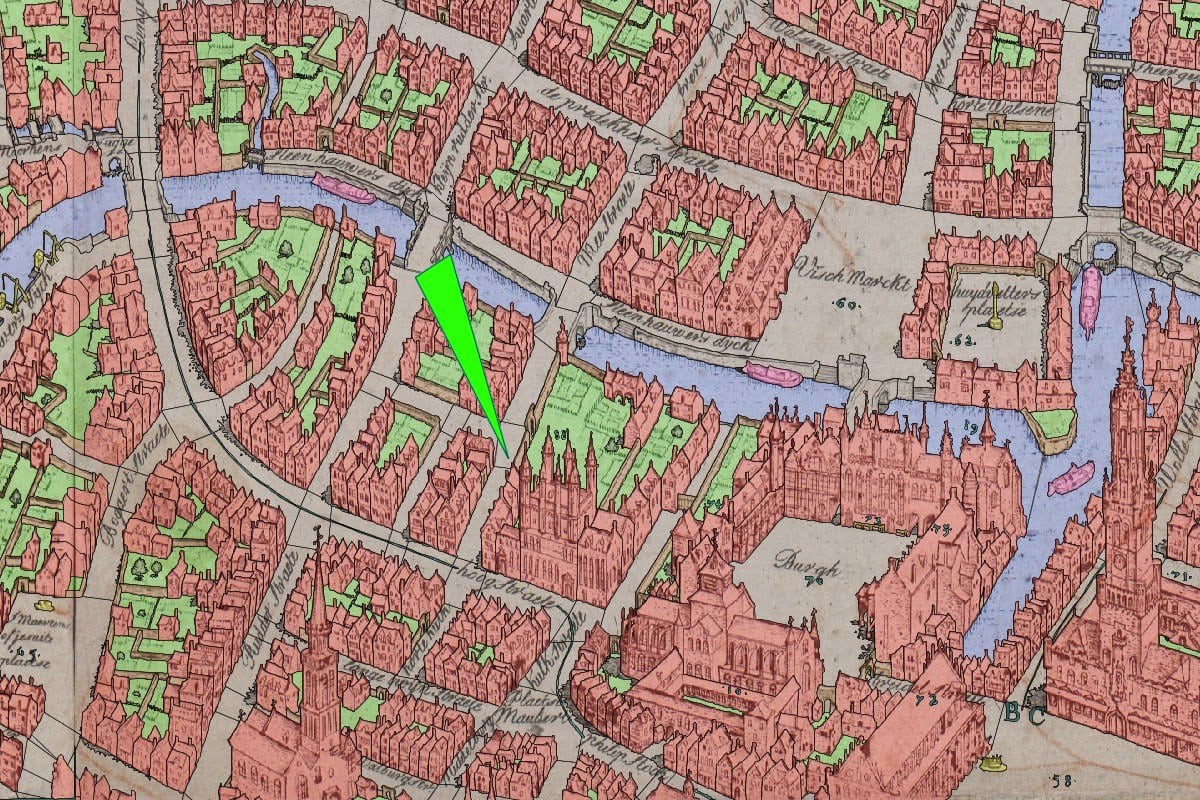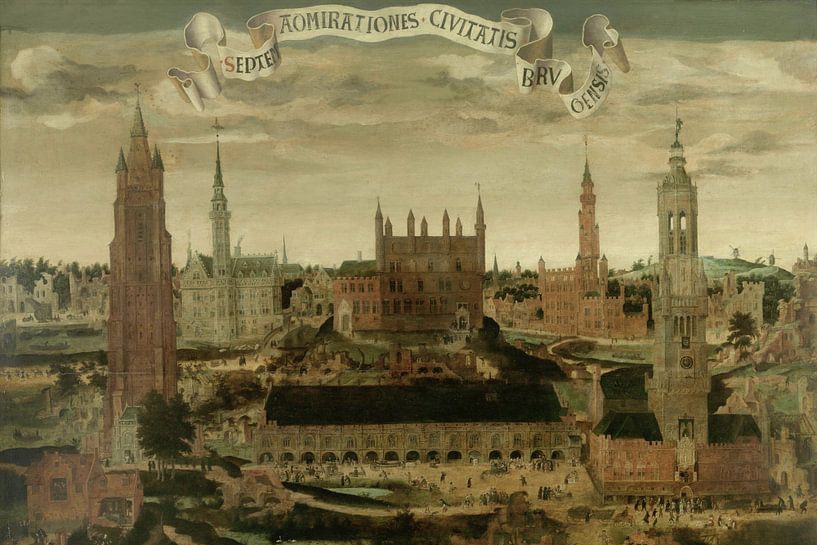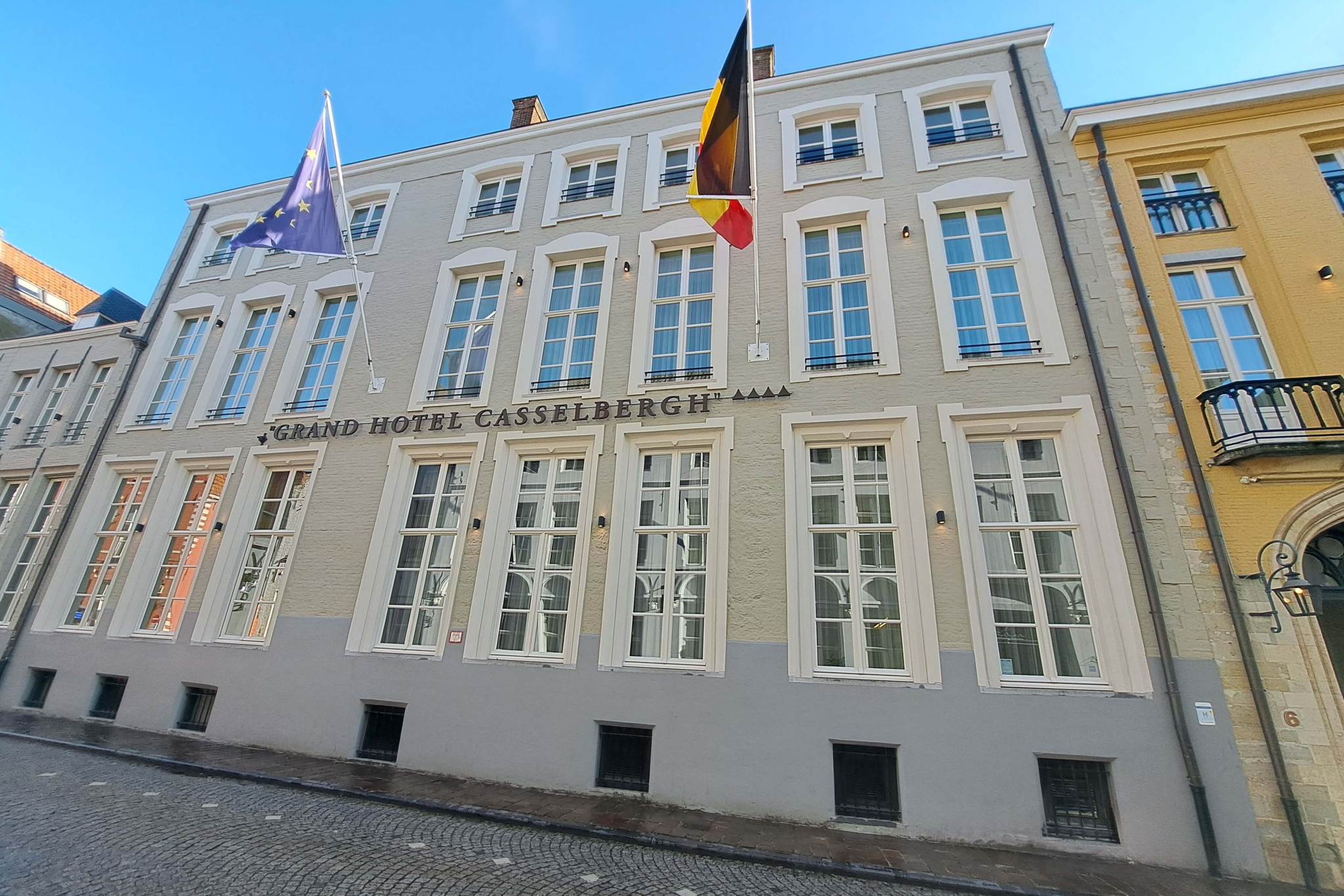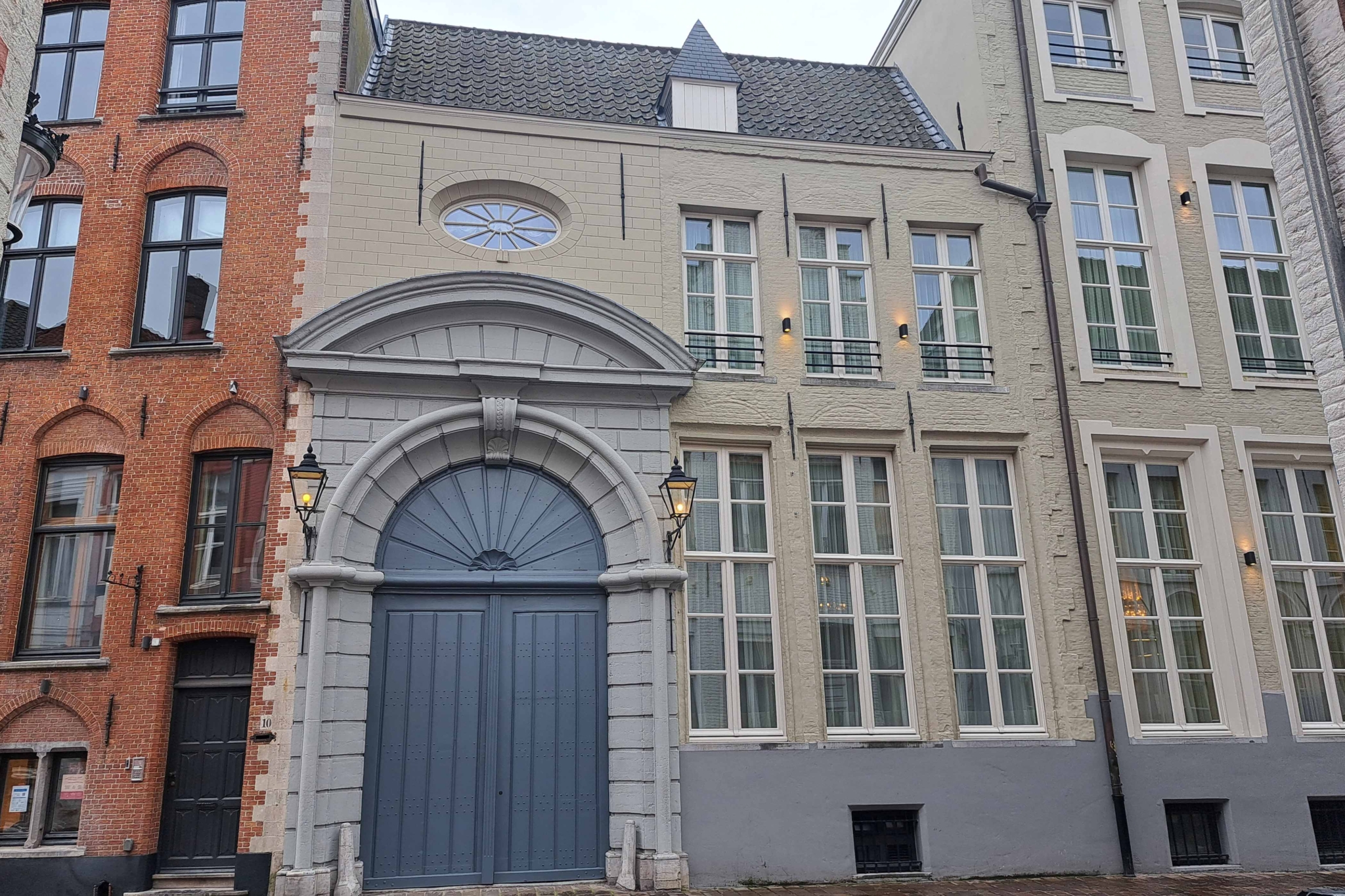Huis Casselbergh
Huis Casselbergh has sheltered notable figures since the 13th century. The name possibly refers to Robrecht van Cassel, lord of the area around the Casselbergh (French Flanders). The main resident of the house was the English monarch King Charles II during his exile (1656-1659).
Afterwards it was occupied by the family of Caloen and Jean-Baptiste de Béthune and his wife Emilie van Outryve d’Ydewalle. In 1922, the house was purchased by the City of Bruges, repurposed as offices.
Since 1959, the areas Huis Casselbergh, de Zeven Torens and ‘t Fransche Schild were owned by the government and large parts of the building went through a period of deterioration.
The Grand Hotel Casselbergh was opened at the end of 2009. This after a two and a half year restoration. The restoration of the building is the great achievement of the building owner, the project developer of the Degroote family.
De Zeven Torens
The house “De Zeven Torens” derrives its name from the seven towers that once adorned its structure. Likely built together with Huis Casselbergh in the 13th century. The most famous residents of this house were Juan Lopez Gallo and his wife Catharina Pardo. Juan Lopez Gallo was the chargé d’affaires of the Spanish King Philip II.
The house “de Zeven Torens” is also part of “The Seven Wonders of Bruges” by Pieter I Claeissens. In this sublime painting, De Zeven Torens shine alongside six other Bruges wonders such as: “De Waterhalle”, “Onze Lieve Vrouwekerk”, “the Belfry”, “De Poorterslogo”, “Het Oosterlingenhuis” and “Het Waterhuys”.
’t Fransche Schild
Little is known about the house “‘t Fransche Schild”. However, it was originally a broad house that was added to ‘De Zeven Torens’ before 1562. It’s notable features include a grand gate adorned with a door needle dating back to 1723.
